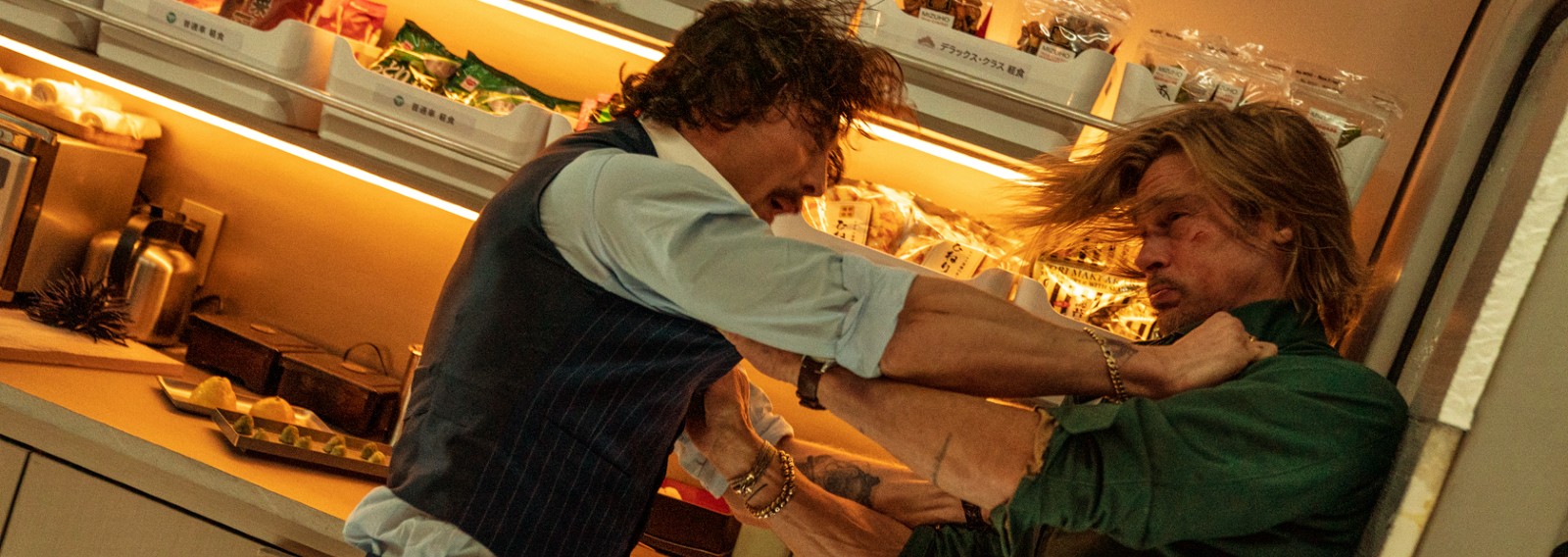The new film Bullet Train sends Brad Pitt and a host of co-stars playing fellow assassins speeding through the night on a high-speed train heading from Tokyo to Kyoto. Though this exact journey hasn’t served as the backdrop for a film before (there is a 1975 Japanese film of the same name but it follows a train on a different route), Bullet Train is far from the first thriller to take place on a locomotive filled with passengers. Trains have played crucial roles in cinematic thrills even before the 1903 blockbuster The Great Train Robbery, and it’s easy to see why. The tight spaces, the high speeds, the screeching brakes, the spark of wheels on rails, the easy symbolism of a train charging into a tunnel: trains offer all of that and more.
But are trains the best mass transit system for thrillers? Maybe. But before giving trains the crown, let’s consider a few other contenders, the films made about them, and what makes each uniquely thrilling.
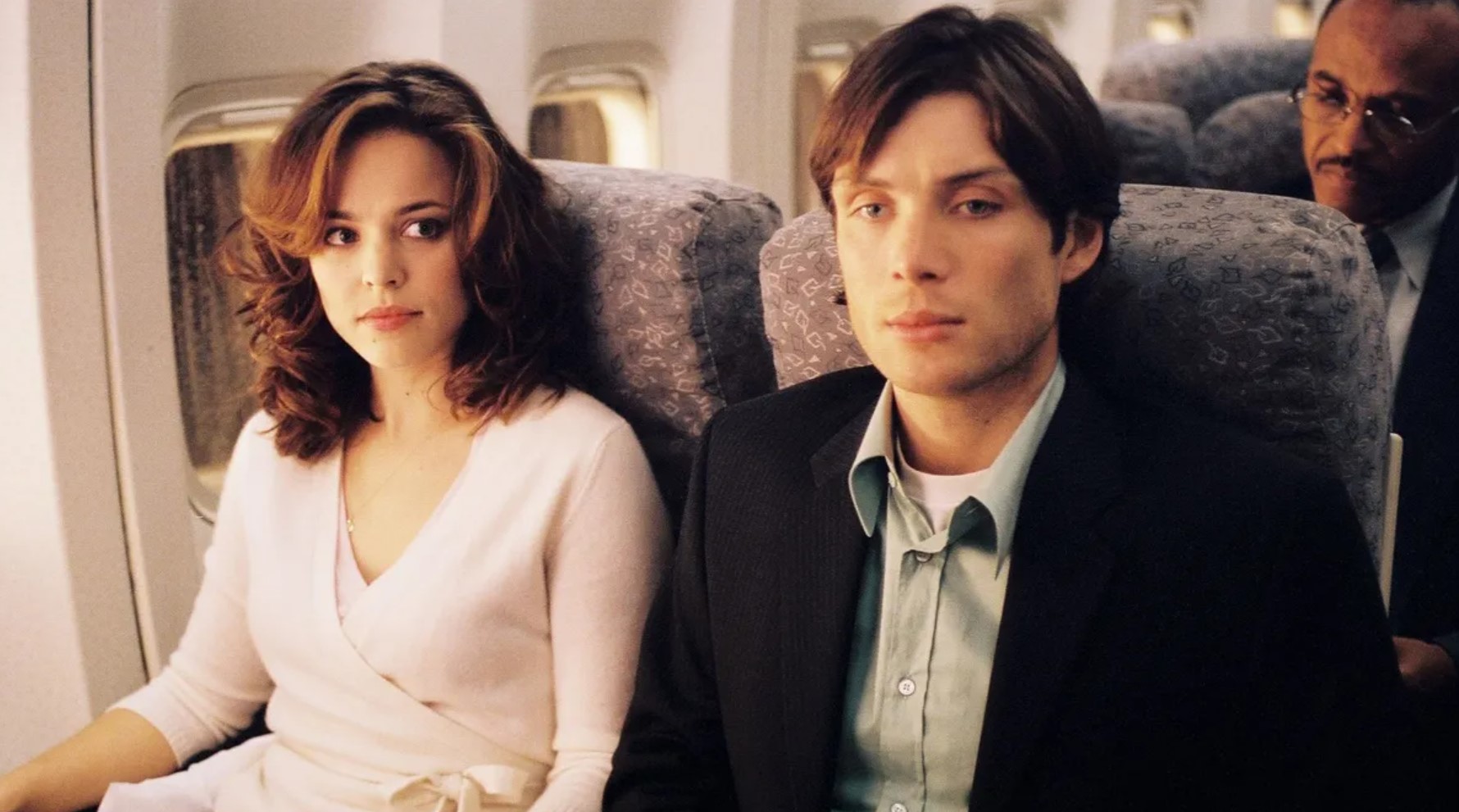
The Case for Planes
Planes offer some serious competition when it comes to tense movies about public transportation. Early aviation movies tended to be about aerial combat, high-flying daredevils, and tough-talking airmail couriers working in fictional South American countries (OK, that’s pretty much just Only Angels Have Wings). But the years after World War II saw more and more ordinary folks taking to the sky to see the world — and discover the (mostly imagined) terrors of air travel. While accidents were relatively rare (if less rare than today) they weren’t non-existent. And no amount of reassurances made it possible for passengers to forget they were hurtling through the sky in a metal tube. A lot could go wrong!
In movies, it went wrong pretty frequently. In the 1957 Zero Hour!, half a passenger plane’s passengers and crew (including the pilot and co-pilot) become ill after choosing the fish dinner, forcing a PTSD-stricken ex-fighter pilot to bring the plane down. If that sounds familiar, it’s probably because the 1980 parody Airplane! borrowed its plot. But Airplane! had more than Zero Hour! in its sights. The film arrived after a decade of disaster films that included the 1970 hit Airport (based on a novel by Zero Hour! writer Arthur Hailey) and its sequels. Filled with stars, the films imagined all manner of horrible things that could befall airplanes, airports, and those who work there. (The original film includes both a biblical-level snowstorm and a suicide bomber.)
The airborne disaster film was a winning formula, at least for a while, its success predicated on the sense that flying, though largely safe, never really feels safe (and always had the potential to be unpleasant; imagine being seated next to Charo for a transatlantic flight). And sometimes it’s decidedly not safe at all. Whether drawing from real or imagined incidents, films like Sully and Flight put viewers in the center of some harrowing worst-case scenarios. Planes also present all sorts of possibilities for bad guys, from hijackers to terrorists to the jet-destroying gremlins of “Nightmare at 20,000 Feet” (whether in an episode of the Twilight Zone or as the only really successful part of Twilight Zone: The Movie). Maybe you get ensnared in the plot of a charming terrorist, as in Red Eye. Maybe you’re a President of the United States unexpectedly called upon to kick ass, as in Air Force One. Maybe you’re John McClane’s wife and you find yourself stuck in the air until your husband allows your plane to land safely. Maybe you’re an air marshal who received threatening text messages mid-air, as in Non-Stop. Flying: it’s scary stuff!
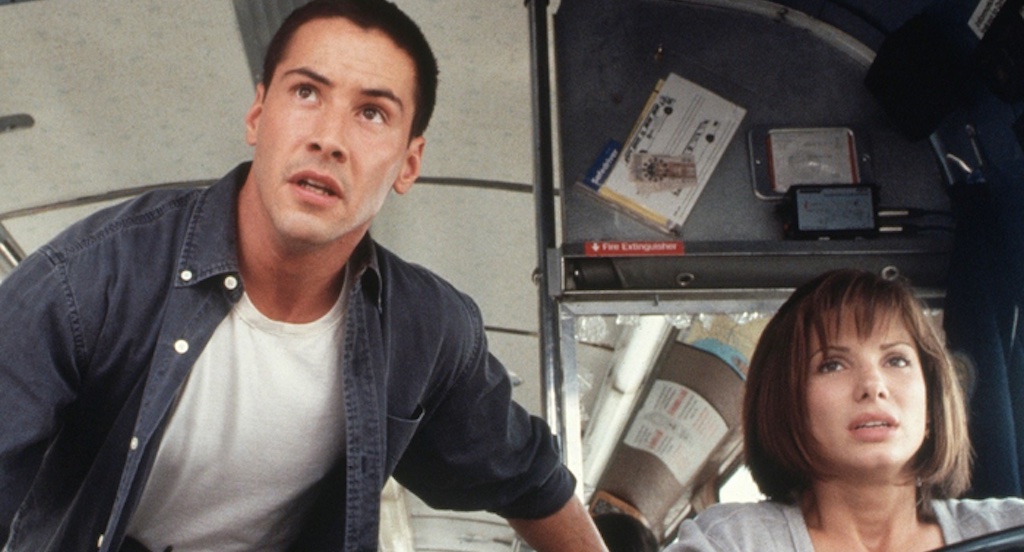
The Case for Automobiles
The argument for automobiles is largely founded on unmet potential. First, let’s define some terms: yes, cars are thrilling, as one film after another has proven. But cars aren’t designed for mass transit. So that leaves buses. And, yes, as Speed proved, buses can provide a fine setting for thrillers. And you know what other movie does that? Exactly.
There are a few, including a pair in films starring Clint Eastwood. In Dirty Harry, Eastwood’s Harry Callahan has to contend with “Scorpio” (Andrew Robinson), a Zodiac Killer-inspired madman who kidnaps a school bus filled with kids (a sequence that would later inspire the worst mass kidnapping case in American history). Eastwood’s 1977 film The Gauntlet climaxes with Eastwood and co-star Sandra Locke using an armored bus as a shield against a bunch of corrupt cops. The second A Nightmare on Elm Street opens and closes with a pair of (literally) nightmarish bus sequences.
And, for a while, that was kind of it. Like Airplane!, the 1976 film The Big Bus parodies the era’s disaster movies. The bus setting is part of the joke. Speed proves they don’t have to be, but few other films have taken advantage of the bus’s potential — at least until recently. The best scenes of both Marvel’s Shang-Chi and the Legend of the Ten Rings and the Bob Odenkirk action film Nobody both take place on buses. Could a bus-aissance be upon us?
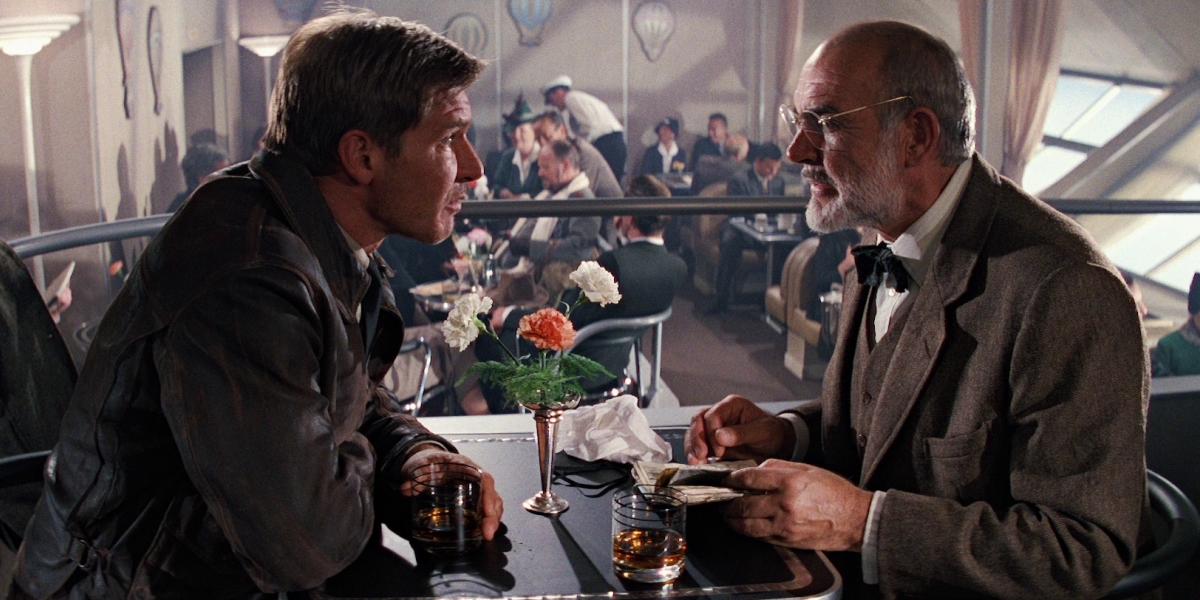
The Case for Others
Boats: There’s a case to be made for boats, sure. Plenty of thrilling movies have been set aboard boats. But, all the doomed immigrants of Titanic aside, boat movies are rarely about public transportation. They’re more often about military vessels, fishing ships, luxury liners, or yachts. Eliminating the many great boat movies set on any of the above doesn’t leave a lot, though the ferry scene in The Dark Knight is pretty great. Sorry, boats.
Blimps: There are blimp thrillers, most famously Black Sunday (in which a crazed Bruce Dern threatens the Super Bowl in the Goodyear blimp) and The Hindenburg, a dramatization of the famed airship disaster. And, speaking of the Hindenburg, it serves as the setting for a memorable scene in Indiana Jones and the Last Crusade. But, again, it’s a pretty narrow pool.
Elevators: Again, there’s potential there (if we want to count elevators as mass transit systems) but not much of a sample size. The great elevator thriller has yet to be written (so consider that a challenge).
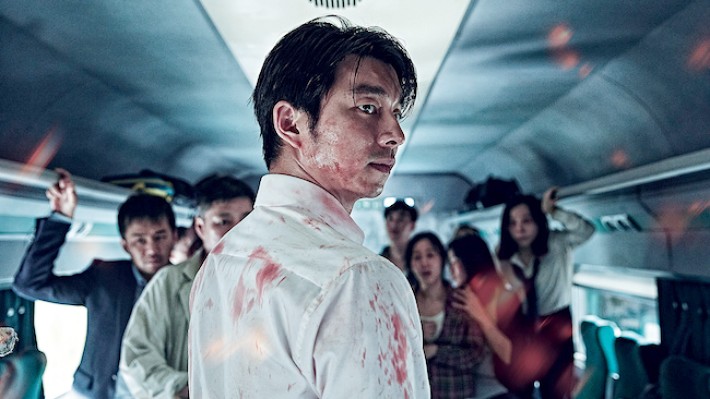
The Case for Trains
And so we return to trains, zooming pods of paranoia that have played host to everything from Hitchcock’s twisty espionage thriller The Lady Vanishes (and, of course, key scenes in Strangers on a Train) to the zombie hordes of Train to Busan. They’ve been battlegrounds for James Bond since From Russia With Love and served as settings for everything from classic westerns to the post-apocalyptic future of Snowpiercer. Factor in subway thrillers—and New York subway movies are practically a genre unto themselves thanks to classics like 1974’s The Taking of Pelham One Two Three and The Warriors—and the argument grows even stronger.
Pitted against planes they offer the same sense of tight confinement while allowing for greater mobility. (And, unlike planes, you can fight on top of them as well as within them.) As for boats, it’s dramatic to throw an enemy into the ocean but even more dramatic to toss one off of a moving locomotive. Buses and other vehicles might someday offer a challenge but for now, trains look, to borrow the title of another solid train thriller, pretty unstoppable.

